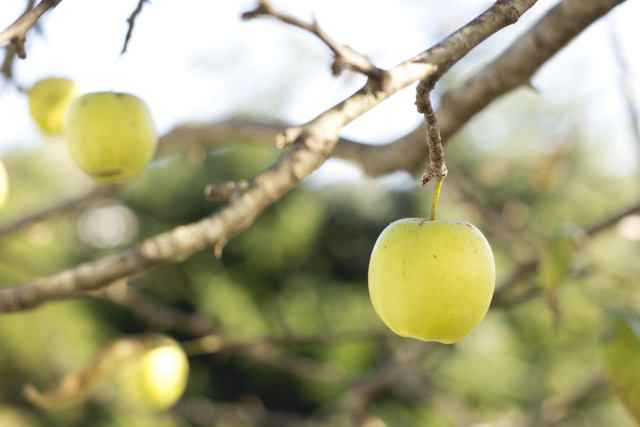
Photo by Tim Mossholder, unsplash.com
I inhale deeply as I saunter along the trail. The smells of the forest permeate my being. Fallen tanoak leaves mix with earthy humus and the sweet smell of bay laurel.
The delicate crunching of leaves accompanies my steps. At 8:00 AM on a Thursday, I’m the only one on the trail. Taking advantage of a rare day off from work, I grab my pack and head to the hills. Now I stroll contentedly in the forest.
The coffee-colored pathway is almost as wide as a dirt road. Trees arch overhead, obscuring the morning sky. To my right a shadowy forest of tanoak and bay runs uphill to a tree-lined ridge. My view to the left is screened by dense brush and a mixture of small trees. But I know that a grassy clearing and wooded creek lay just beyond.
I had already encountered a flock of wild turkeys foraging among the fallen leaves. And I surprised a doe and her fawn moments later.
When I search for wildlife, I look at the forest differently. I see “through the trees” to gaze at what’s behind them. Mentally, I remove the trunks and branches from my field of view. I focus on seeing animals, usually motionless, that may be trying to blend into the background.
So I amble down the trail searching through the branches for movement, contrast, and familiar shapes. But I see nothing but green foliage. Green, green, green, green, RED??!!!!
A Snack for the Sharp-eyed Hiker
I jolt to a stop. To my left, through the screen of foliage, I make out the red of an apple. The clearing beyond was once an apple orchard. But the land had not been used for agriculture in more than 30 years.
I leave the trail and make my way into a sheltered clearing. It’s a garden of Eden – a mix of crimson, green, and gold.
In an earlier article, I show how to keep a wild foods calendar. Right now, my own calendar says “Apples!”
But these are not wild apples. The crabapple is the only apple truly native to North America. These are what I call “feral apples.” Cultivated long ago, they now survive without human care. There are several types of apple trees here, and they are all loaded with fruit.
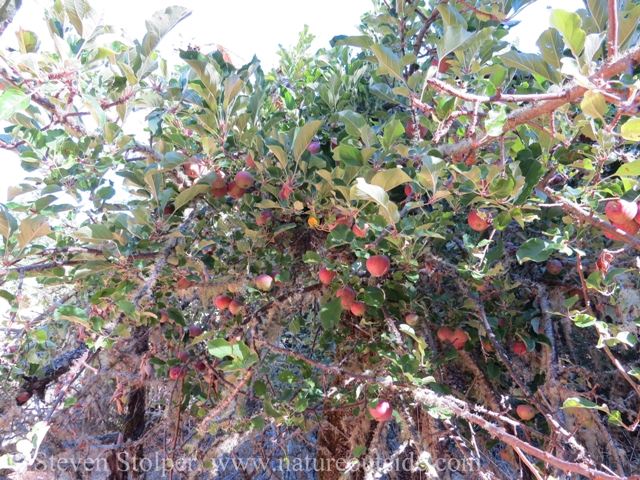
This “feral” apple tree sprawls wildly. But it is loaded with gorgeous red apples
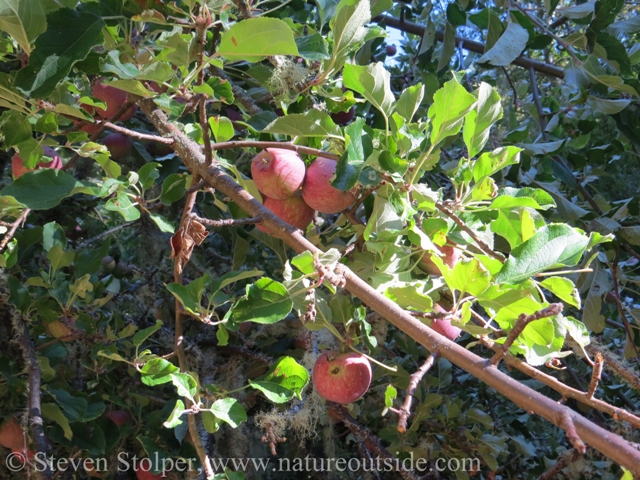
Gorgeous red apples on a feral apple tree
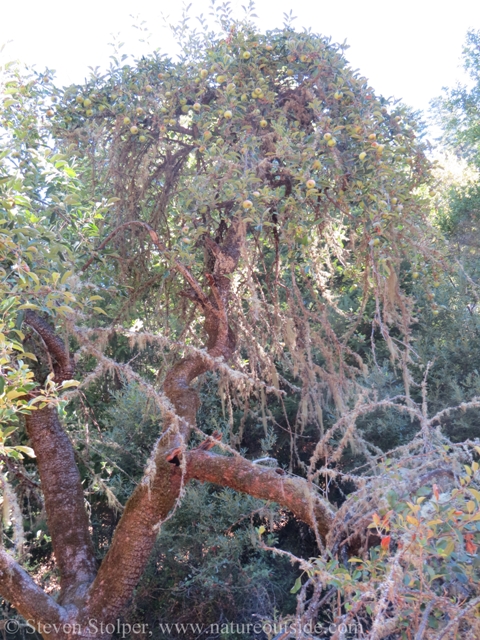
A wildly branched tree loaded with golden apples
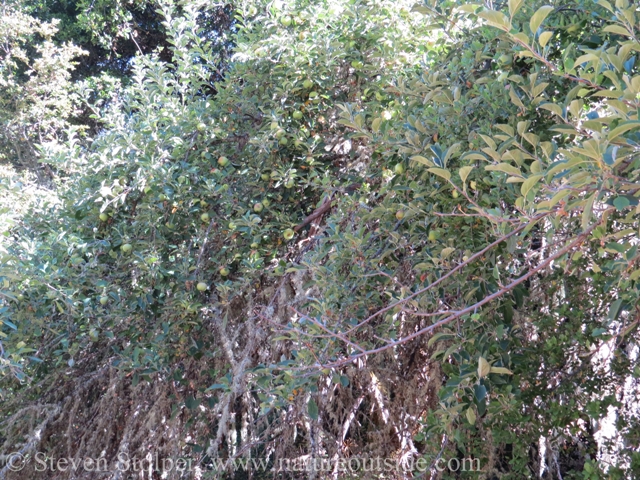
This tree has more of a shrub form. Golden-green apples hang from its branches.
I have no idea what types of apples these are. More than 2,500 varieties of apples are grown in the United States. They grow in all 50 states, too. Apple trees are amazingly hardy.
I love snacking on edibles when I hike. It’s a chance to taste nature! Usually we rely on our eyes. But with wild edibles we experience nature with our senses of smell and taste. And of course, I’m a sucker for a free meal!
Some Quick Apple Facts1
Did you know that the apple blossom is the state flower of Michigan? Neither did I… I looked it up.
I’m sure you’ve heard the saying, “An apple a day keeps the doctor away.” Apples are a healthy food. They contain no fat or sodium and are cholesterol free. A medium-size apple has about 80 calories and contains around five grams of fiber. The peel contains two-thirds of the fiber and many antioxidants. So eating the peel is a healthy choice (if no pesticides). Apples ripen roughly six to 10 times faster at room temperature than if refrigerated.
If an apple a day keeps the doctor away, what does an onion do?
It keeps everyone away!
Some apple trees grow over 40 feet high and live more than 100 years. The apples themselves have five seed pockets (carpels). The number of seeds per carpel is determined by the vigor and health of the plant. Different varieties of apples will have different numbers of seeds.
It appears that apples have been with us for a long time. Charred apple remains from 10,000 years ago have been found in prehistoric dwellings in Switzerland.
Keep your Eyes Peeled
So keep an eye out for “feral apples” in your area. Learn the history of the land you hike to discover where apples might be. Of course, be ethical and law abiding if you forage for apples. Leave enough for wildlife and for others to enjoy.
Have you foraged for feral apples? What have you made from them? Leave a comment below and share your experience.
References
Other Wild Edibles on NatureOutside
How to Make Acorns into Food (Part 1)
Bushcraft Dessert – Make a Lavender Dip for Strawberries
For fun facts and useful tips, join the free Bushcraft Newsletter.



You description made me want to go camping again, which i have not done in some 48 years.
Liz, I hope you go! There is no time limit for enjoying the outdoors. 🙂